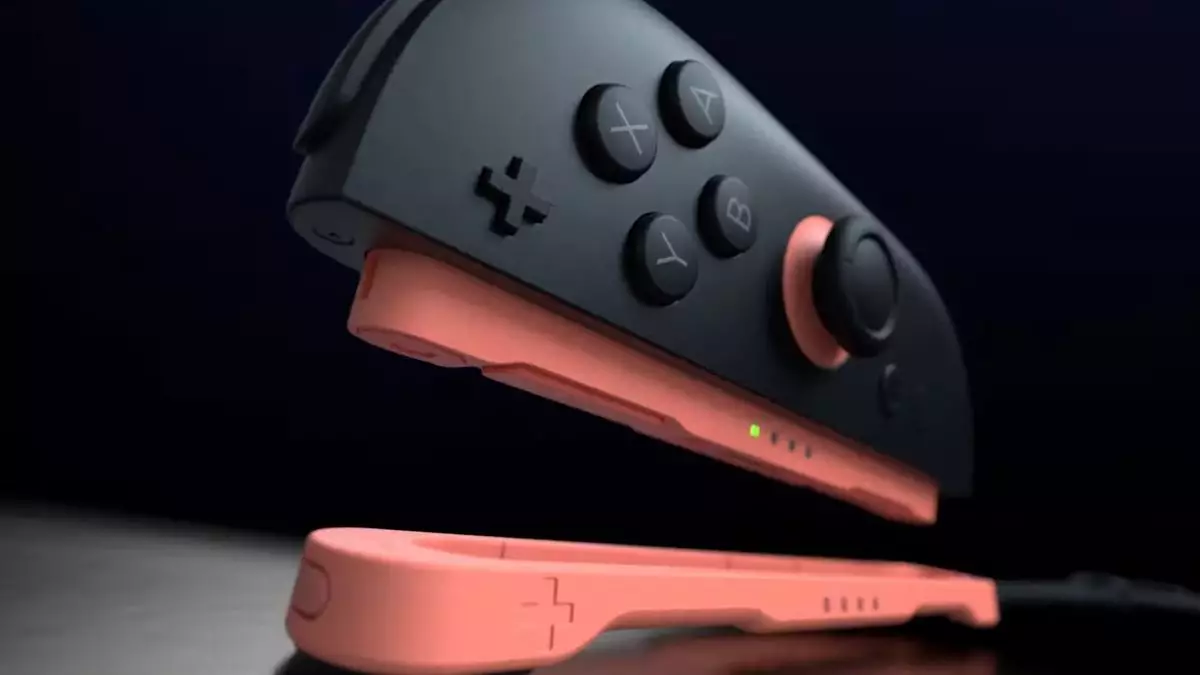The gaming landscape constantly evolves, often accompanied by new technology that reshapes how players interact with their favorite titles. As the Nintendo Switch 2 is set to debut this year, the excitement is palpable among fans and critics alike. One of the most talked-about features is the dual functionality of the newly designed Joy-Cons. Recent patents reveal a potential transformative capability: the utilization of Joy-Cons as miniature gaming mice.
The recent patent, filed in 2023 and published just this week, sheds light on the innovative design of the Nintendo Switch 2’s Joy-Cons. Featured in the documentation is a unique ‘input device’ concept, integrating a “sensor for mouse operation.” While patents often come packaged in dense legal language that can be challenging to decipher, the essence of this patent is clear: Nintendo is exploring the cross-pollination of console gaming and PC-style controls.
What stands out in this patent is that the Joy-Cons would work best when laid flat against a surface, allowing the sensors to detect motion effectively. This approach contrasts with traditional mouse usage, hinting that players could find new ways to experience both single-player and cooperative gaming through this unexpected input method.
The possibility of dual-wielding Joy-Cons as gaming mice opens a dialogue about how Nintendo could blend genres and playing styles. The joystick and button layout of the Joy-Cons is inherently designed for console gaming, which raises questions about how effective they would be when used as separate input devices.
While the implications of mouse functionality might not seem immediate, especially for multiplayer games, they could provide fresh mechanics in puzzle-solving titles and cooperative experiences. Nintendo has a rich history of fostering unique gaming interactions, demonstrated through innovative titles like “1-2-Switch” and “Snipperclips.” These titles already capitalize on unconventional mechanics, so integrating mouse-focused gameplay isn’t a far-fetched idea.
Historically, Nintendo has been at the forefront of motion controls and gyroscopic technology. From the Wii Remote to the Switch Pro Controller, these devices have allowed players a range of physical engagement with their games. The switch to mouse-like capabilities in the Joy-Cons could represent an intriguing pivot in input methodology. This strategy might offer a fresh alternative to players who may not align with traditional controller configurations, particularly in fast-paced environments like “Fortnite.”
Moreover, the Nintendo Switch has previously allowed the use of mouse and keyboard; the new design might serve to streamline this experience. Casual players or newcomers to the franchise might prefer the intuitive design behind Joy-Cons as mice, as opposed to a full keyboard setup, making competitive gaming more accessible.
While patents signal possibilities rather than confirmations, there are already visible signs of new technology in the first-look trailers of the Nintendo Switch 2. Observers noted sensor designs that hint at dual functionality. Furthermore, the addition of support structures for better usability signifies that Nintendo is committed to evolving the gameplay experience.
In addition to enhancing the Joy-Cons’ compatibility with the Nintendo Switch 2, there’s speculation about these new controllers finding a role in future Nintendo consoles or peripheral accessibility. Whether Nintendo’s plans include broader implementations of this technology remains to be seen, but they’ve previously embraced flexibility in their hardware designs, as demonstrated with the Labo kits.
As we await further revelations from Nintendo, the prospect of Joy-Cons functioning as gaming mice raises intriguing questions about the future of gaming interaction. It’s an exciting time for the industry, particularly for those who appreciate creativity in design and varied control schemes.
While the mouse input concept may seem unconventional, it’s a testament to Nintendo’s willingness to think outside the box. The transition from traditional gaming inputs to more versatile technologies hints at a broadening horizon for gameplay. If executed successfully, such innovations could satisfy both console diehards and PC enthusiasts, inviting a notification of a potential new era in video games where the lines between console and PC gaming blur, enhancing the experiences available to players. Here’s to hoping that this daring exploration by Nintendo ignites a wave of inspiration across the gaming community.

